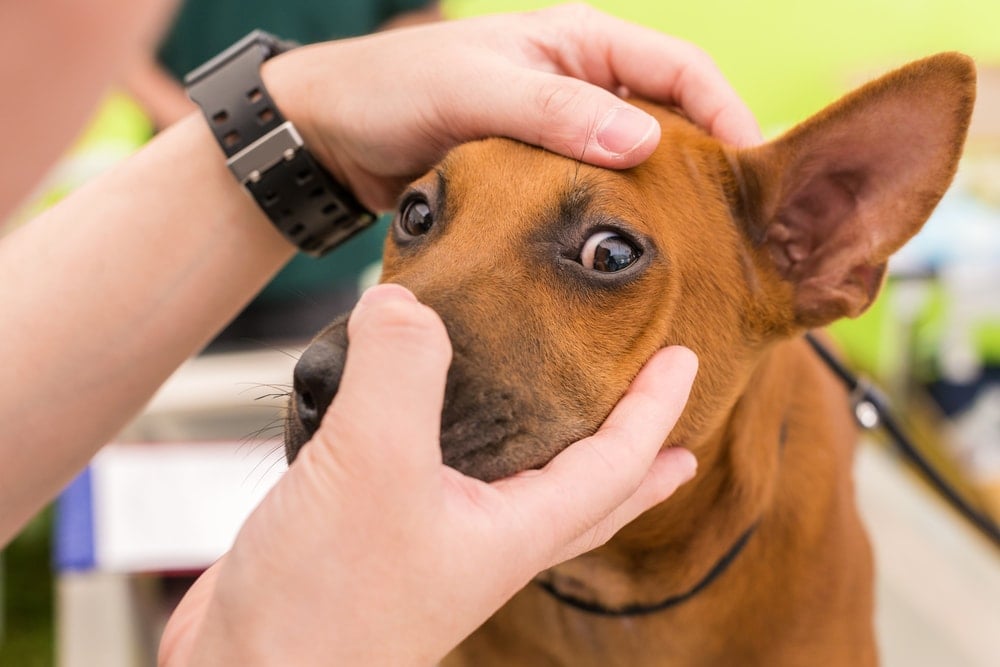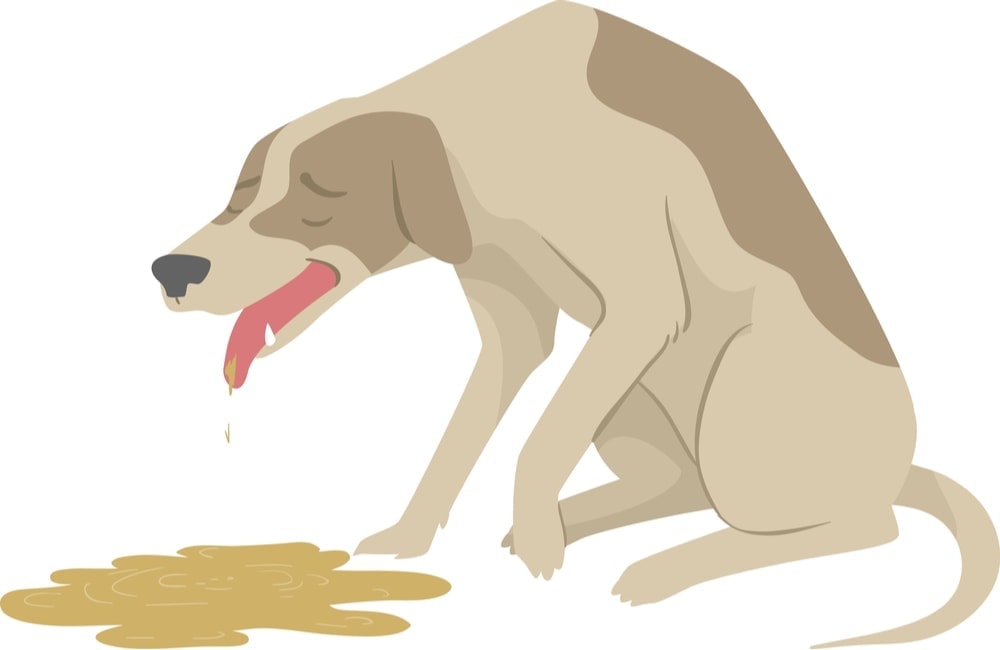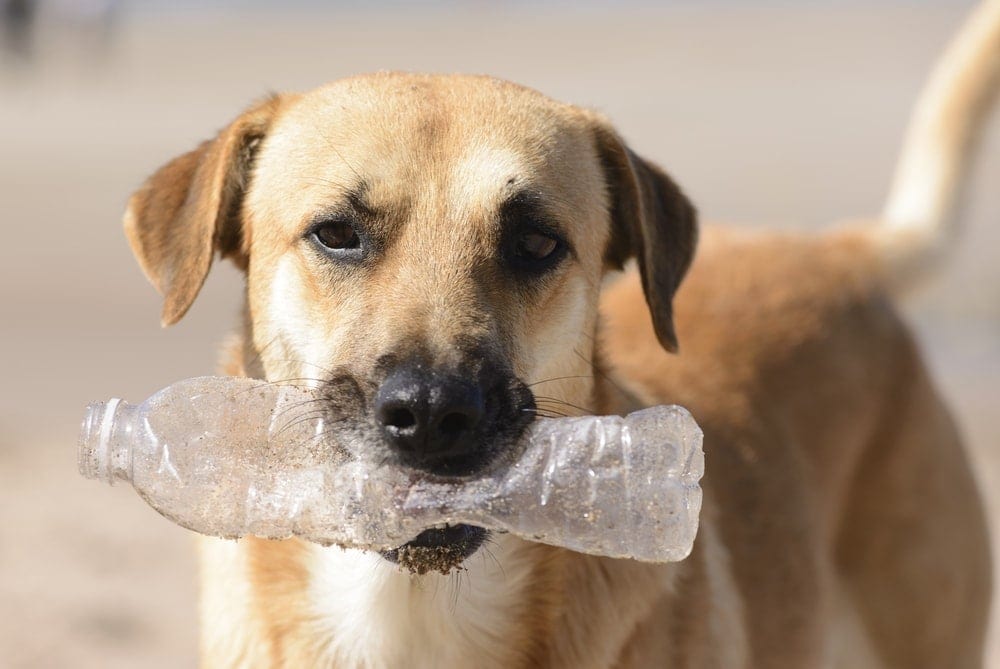While your dog’s eye-rolling might seem adorable at first glance, it might actually be indicative of a problem that needs to be addressed. The more you learn about this behavior, the easier it will be to care for your dog.
Nystagmus is the medical term for unintentional eye movement and this is a fairly common occurrence in dogs and other animals. It can be a variety of reasons why this happens, some of them are serious some are not. So what could cause a dog’s eyes to roll back in its head?
The most common reason is strabismus. It is not dangerous and quite similar to human strabismus. As well seizure, eye injury, pain, and nystagmus can cause eye-rolling at your dog. Better to visit your vet to exclude tumors, cherry eye, hypothyroidism, or vestibular disease.
We always advise you to visit your veterinary doctor in every unknown or strange case, but if you want to learn a bit more about the reasons why your dog rolls its eyes you can find detailed answers in the following article.
What Does It Mean If Your Dog’s Eyes Are Rolling Back?
1. Seizure
It is possible that your dog’s eye-rolling is due to a seizure. The fact is that not all seizures look the same. Sometimes the only noticeable symptom is strange eye movements. You might also notice that your dog seems confused and disoriented for a short amount of time.
Another common sign of a seizure in dogs is excessive drooling. If your dog seems unresponsive while its eyes are rolled back in its head, they are likely to have a seizure. This is caused by abnormal activity in the brain.
If you see you dog rolling its eyes while sleeping there is nothing to worry about. It just could be twitches – natural part of rem sleep when your dog dreams that it hunting hair or a neighbor cat.
There are numerous medications and treatments that can be effective at preventing seizures in dogs. The sooner you get your pet to the veterinarian, the sooner you can help them get relief.
2. Eye Injury
Your dog could be rolling its eyes due to an injury or trauma it sustained at some point. It can be difficult to see the injury if it is on their third eyelid or cornea. They might have gotten their eyelid scratched by another animal or a household accident.
When you take your dog to the vet, they will be able to run tests to see if there are any injuries to your dog’s eye or maybe an infection such as conjunctivitis. If you notice their third eyelid coming up frequently, this is likely the case. Any injuries to their eye need to be treated promptly to avoid infection and minimize pain.
3. Nystagmus
A condition known as Nystagmus may also be causing your dog’s eye to roll back in its head. This condition causes involuntary eye-rolling and other rapid eye movements. Sometimes a dog’s eyes will move rapidly from side to side.
Nystagmus is typically something that dogs have from birth, though these animals can also develop it as they get older.
There are some different types of nystagmus but there some common symptoms associated with this condition including:
- Clumsiness
- Rolling
- Lack of proper coordination
- Walking in circles
- Head tilting
You’ll need to make a point of getting your dog to the vet as quickly as possible if you suspect they have this condition. It can usually be treated quite effectively, but the age of your dog is a big factor. There are various tests that your vet can perform to determine if this is indeed the case of their eye-rolling.
4. Tumor
A tumor on your dog’s eye could be causing strange ocular behavior like rolling. It is also possible that they have a cyst, which isn’t quite as serious but still requires treatment. These growths can even form on the dog’s eyelid, which can produce a similar reaction. Tumors are usually diagnosed with MRI or CT scans.

5. Vestibular Disease
Dogs with the vestibular disease sometimes roll their eyes. This disease typically results from an infection of the middle or inner ear, and it can be quite serious. You may also notice that your dog has a strange gait. While it is most common in senior dogs, it can occur at any age. A dog’s vestibular system is located in the brain, but some of its peripheral components, such as the middle ear, are located inside the dog’s ears the same as in humans’ bodies.
6. Cherry Eye
A condition called Cherry Eye that results in prolapse of the gland around the third eyelid or haw can also be responsible for eye-rolling. This commonly occurs in younger dogs that are adult dogs. If this is the case, you will notice your dog’s third eyelid sticking out. It becomes inflamed and bright red.
The nictitating membrane is usually white in color, but this can vary. It serves as a shield for the eye, and it protects it from various debris, helps fight infections, and sweeps away any mucus. Dogs’ third eyelid gland is quite a common problem for dogs with “wet eyes” such as bulldogs, beagles, cocker spaniels, etc. The dog’s third eyelid gland membrane is responsible for approximately 40% of tears that your dog’s eyes produce.
7. Medications
There are certain medications that can cause a dog’s eyes to roll back in its head, specifically tranquilizers and opiate pain killers. It is important that you are aware of all the potential side effects of any medication you give your dog. Your veterinarian should also explain the side effects when prescribing a medication for them.
If your dog’s eyes are rolling back after receiving a pain relief medication, it just means they are very relaxed, so there’s nothing to worry about. Just make sure that you do not give them more than the recommended dose. It is important that you follow the instructions that came with the medication to avoid any issues.
8. Pain
Severe pain can cause a dog to roll its eyes as well. This pain could be coming from anywhere on or inside your dog’s body.
Some of the more common signs of a dog in pain include:
- Whining or barking more than usual
- Lack of appetite
- Lethargic behavior
- Pacing back and forth
- Restlessness at night
- Excessive drooling
- Sudden weight loss
It can be difficult to tell what the source of your dog’s pain is, which is why you need to see your veterinarian. They should be able to determine what the source of your dog’s discomfort is by performing the appropriate tests.
You will need to make a point of taking your dog to the vet right away if you notice any of the symptoms listed above. The sooner you do this, the sooner your dog can get the relief it needs.
Conclusion
- Your dog’s eye-rolling could be due to a partial seizure. If they are unresponsive while rolling their eyes, this is likely the case.
- An injury to your dog’s third eyelid could also be causing eye-rolling and other strange ocular movements.
- Nystagmus is a congenital condition that can also cause eye-rolling in dogs. Some dogs develop it as they get older.
- The neurological disorder can cause eye-rolling and need proper treatment.
- A tumor on your dog’s eye or eyelid may be responsible for their eyes rolling into their head. The tumor could be benign or malignant, but it’s important to have your dog looked at just to make sure.
- A condition called Cherry Eye causes a dog’s third eyelid to become inflamed and stick out, which often leads to eye-rolling.
- There are a number of medications that can cause eye-rolling dogs, including muscle relaxers.
Frequently Asked Questions:
What happens to dogs’ eyes when they are dying?
As well as humans when dogs die their eyes are open because it takes active muscle control to close them. But you can notice some changes in their eyes – they might look glossy or dull.
Why are my dog’s eyes moving side to side?
Movements from side to side are similar to eye-rolling and can be caused by a condition known as Nystagmus. But there can be different reasons for this so it is wise to bring your canine friend to the vet for a check-up.
Can nystagmus in dogs be cured?
Nystagmus is usually temporary and resolves on its own or improves with time. But it is important to find the reason caused it: if it is an infection then antibiotics will help. If it’s a case of hypothyroidism, management of the metabolic condition should resolve the vestibular problem.
Is nystagmus life-threatening in dogs?
Nystagmus disease may cause your dog mild discomfort or motion sickness, the good news is, that it isn’t painful or dangerous and will likely clear up on its own without treatment within a couple of weeks.











